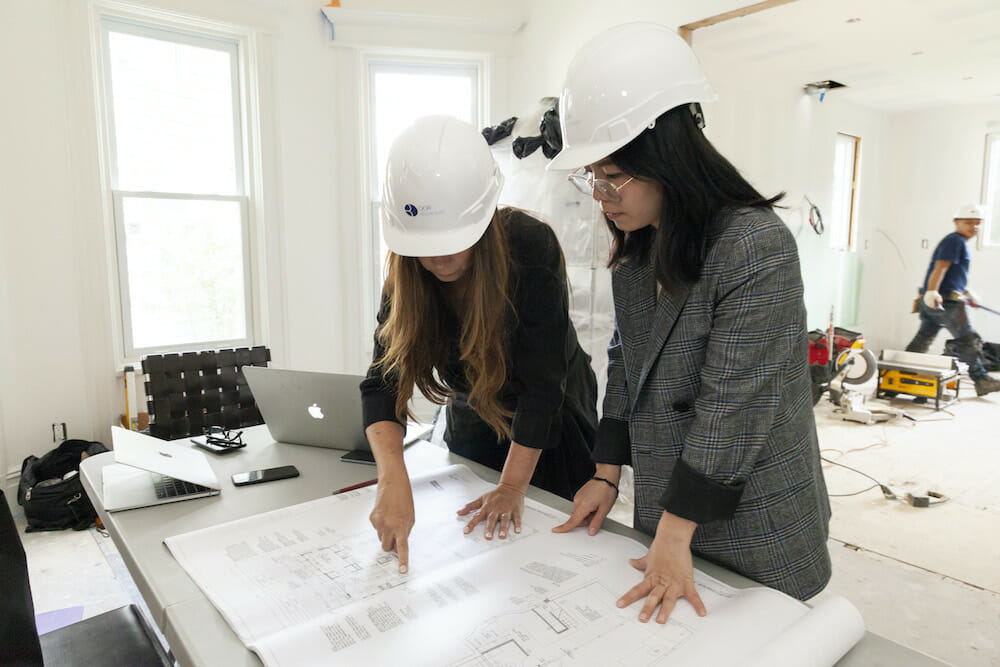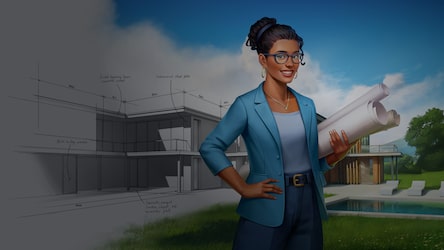Architect Career Path: Competencies, Studies, and Advancement Guide
Architect Career Path: Competencies, Studies, and Advancement Guide
Blog Article
Discover the Vital Abilities and Qualities Every Architect Must Possess
As an architect, you understand that success in your area surpasses just technological abilities. It has to do with blending creative thinking with usefulness, promoting partnership, and managing tasks successfully. Each high quality plays a vital duty in your capacity to design areas that motivate and operate well. What are the particular skills that can absolutely set you apart? Let's check out the necessary features every Architect must cultivate to grow in this ever-evolving occupation.
Imagination and Advancement
Creativity and innovation are at the heart of style, driving the design of rooms that motivate and work effortlessly. You'll frequently discover brand-new materials, techniques, and innovations to improve your styles.
You'll likewise draw inspiration from various resources-- nature, art, and also daily life can trigger fresh concepts. This capacity to blend creativity with usefulness permits you to deal with intricate troubles, ensuring your layouts fulfill both aesthetic and functional needs.
Strong Interaction Skills
While developing remarkable rooms requires imagination, strong communication skills are just as vital for designers. You need to communicate your concepts plainly to clients, professionals, and employee. Paying attention is simply as crucial; comprehending your customer's vision aids you produce styles that really fulfill their requirements.
You'll often have to explain complex principles in such a way that's very easy to comprehend, whether you're providing a proposition or talking about products. Effective interaction promotes collaboration, ensuring everybody gets on the very same web page throughout the project.
Building relationships is important, as well. When you establish count on and rapport, clients are more probable to share their worries and responses, bring about far better results.
Lastly, don't take too lightly the power of body movement and aesthetic help. They can improve your message and make your discussions much more appealing. Strong communication abilities not just raise your styles however additionally reinforce your expert connections in the architectural globe.
Technical Efficiency in Style Software
As you navigate the ever-evolving globe of design, understanding style software program comes to be vital for converting your imaginative concepts right into tangible strategies. Familiarizing yourself with programs like AutoCAD, Revit, and SketchUp will certainly not just boost your design capacities however likewise streamline your process. These tools enable you to develop thorough drawings, 3D versions, and also simulations that can assist you picture and provide your concepts more effectively.
Being skilled in these software applications also boosts your partnership with service providers and engineers, as everyone can work from the same electronic structure. Additionally, your capability to adapt to new technologies will maintain you competitive in the field. Frequently updating your skills and discovering brand-new functions can set you in addition to your peers, ensuring your layouts are specific and cutting-edge. Ultimately, technical efficiency in style software application is a foundation of successful style, assisting you bring your visions to life.
Comprehending of Engineering Principles

Understanding engineering concepts likewise enables you to anticipate prospective obstacles early in the design procedure. When you're conscious of exactly how different products act under numerous conditions, you can make informed choices that improve your layouts. Your layouts should not only be cosmetically pleasing yet sustainable and also functional.
In addition, a solid grasp of design concepts permits you to innovate within restraints. You can push imaginative limits while still sticking to safety criteria. Inevitably, this understanding improves your building practice and sets you apart in an affordable field.
Project Management Talents
Effective task administration capabilities are important for engineers, enabling you to oversee all elements of a project from conception to conclusion. You'll need to collaborate with various stakeholders, great post to read including designers, professionals, and clients, ensuring everyone's on the same page. Setting clear objectives, timelines, and spending plans is fundamental; it assists you maintain the task on the right track and within extent.
As an engineer, you ought to also be experienced at danger management, identifying prospective issues before they escalate. Solid communication skills are crucial, permitting you to verbalize your vision and inspire your team. You'll profit from being organized and detail-oriented, as this helps simplify procedures and avoid expensive delays.
Additionally, adaptability is crucial; jobs typically progress, and being versatile the original source permits you to respond effectively to changes. Inevitably, your project monitoring abilities can significantly impact the success of your architectural undertakings, guaranteeing you deliver quality outcomes on schedule and within budget plan.
Interest to Detail
While handling projects is essential, your attention to information can make a substantial distinction in the top quality of your job. Every line you draw, every material you choose, and every small specification you keep in mind adds to the overall success of a job. You need to be thorough, making sure that your styles not only fulfill aesthetic standards yet also follow developing guidelines and codes.
Missing out on even a small information can bring about expensive modifications or safety concerns down the line. By growing a keen eye for detail, you improve your ability to detect possible issues before they intensify. This alertness not only saves you time and sources yet also develops your reputation as a trusted Architect. Keep in mind, it's frequently the smallest details that raise a job from good to exceptional. So, welcome this skill, and let it assist your style process, making sure that your vision is carried out flawlessly.
Versatility and Problem-Solving Skills
As a designer, you'll usually encounter unforeseen adjustments in layout and job demands. Your ability to accept these changes and discover ingenious services is important for success. Remaining versatile in your strategy not only boosts your analytic abilities however additionally maintains your jobs on course.
Accepting Change in Style
Welcoming change in layout is essential for architects, specifically when steering advancing client needs and arising innovations. You need to cultivate flexibility, as jobs commonly move direction based upon new insights or restraints. Being open to change allows you to check out cutting-edge techniques and create services that reverberate with your clients.
When confronted with obstacles, your analytical skills come you can look here into play. You'll often require to reassess concepts and readjust intend on the fly, ensuring that the final end result aligns with the client's vision while fulfilling safety and security and regulatory standards. By being flexible and clever, you not only boost your styles yet likewise build count on with your clients, verifying that you can navigate the intricacies of modern architecture effectively.
Innovative Solutions to Difficulties

Versatility in Job Management
While steering the intricacies of job monitoring, versatility ends up being an important possession for architects. You'll frequently deal with unforeseen obstacles, from layout changes to budget plan restraints, calling for fast reasoning and flexibility. Embracing change permits you to pivot your methods and discover cutting-edge options, guaranteeing task success.
Strong analytic skills are vital; they allow you to evaluate situations, consider choices, and carry out reliable services on the fly. When dealing with diverse teams, being open to comments and alternative concepts cultivates cooperation and triggers imagination.
Often Asked Questions
What Educational Background Is Needed to Come To Be a Designer?
To become a designer, you'll require at least a specialist level in style, typically a Bachelor's or Master's. Completing a teaching fellowship and acquiring licensure with examinations is crucial for your occupation development.
How Essential Is Networking in the Architecture Field?
Networking's crucial in architecture. It aids you construct relationships, uncover job chances, and gain understandings from skilled professionals. By attaching with others, you enhance your career prospects and stay updated on sector patterns and growths.
What Are the Usual Job Paths for Architects?
Common career paths for engineers consist of design roles in firms, job management, metropolitan preparation, and specialized areas like lasting architecture. Architect. You might likewise explore training or consulting, depending on your experiences and interests
Exactly How Can Designers Remain Updated With Sector Trends?
To stay updated with market trends, you should consistently go to seminars, join expert organizations, sign up for appropriate magazines, and engage with online discussion forums. Connecting with peers likewise aids you get understandings into emerging advancements in architecture.
What Role Does Sustainability Play in Modern Architecture?
Sustainability forms modern style by stressing energy performance, source conservation, and environment-friendly products. You'll create areas that decrease ecological impact, boost owner wellness, and react to environment difficulties, making your styles more appropriate and impactful.
While developing amazing areas needs imagination, strong interaction abilities are just as important for architects. Solid communication skills not only elevate your designs however also enhance your expert partnerships in the architectural world.
Proficiency in layout software lays the groundwork for a deeper understanding of engineering principles, which is essential for engineers.As an architect, you'll typically deal with unanticipated changes in layout and project needs.Welcoming modification in layout is necessary for designers, specifically when guiding progressing customer needs and arising innovations.
Report this page